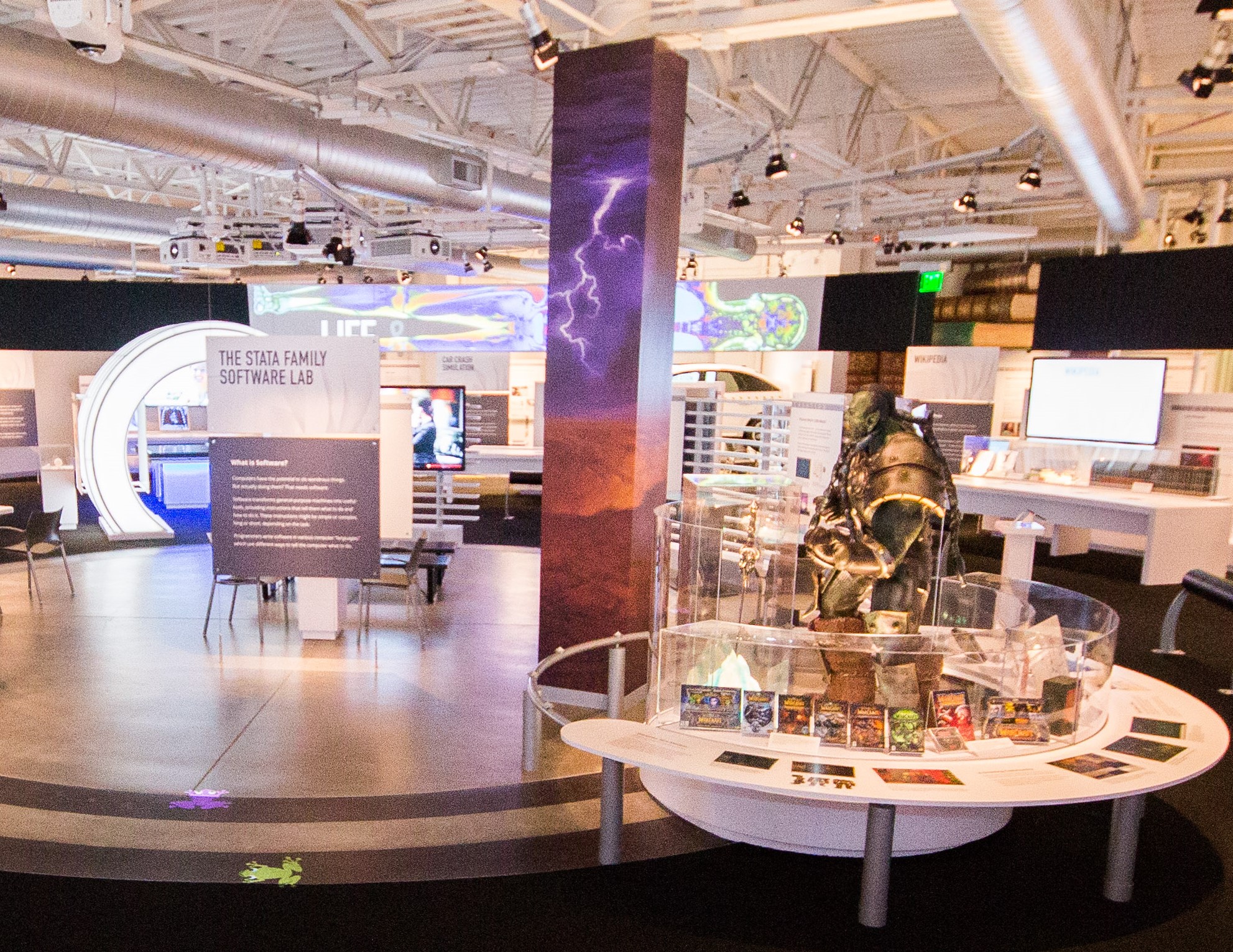Data Minding

Make Software: Change the World! exhibition at the Computer History Museum in Mountain View, California (© Studio Dizon Photography / Courtesy of the Computer History Museum)
Over the past few weeks, we have looked at how the material and social dimensions that influence the changing meanings of museum objects relating to digital technology in our Object Circuit lead by our project’s PI, Dr Simone Natale, and the temporal structures associated with museum narratives in our Time Circuit lead by Professor Ross Parry. We turn now to the Data Circuit, I, alongside museum practitioners from the Science Museum in London, Bletchley Park in Milton Keynes, UK, and the Computer History Museum in Mountain View, California, are examining the intangible nature of data.
The Data Circuit began with the relatively straightforward research question: How can museums narrate the role of information and data in computing histories? This premise looks to the heart of the challenge that software poses for the museum and speaks to current research priorities at both the Science Museum and the Computer History Museum. Yet, as exemplified with the practice of our partners at Bletchley Park, data can (and very often does) appear as analog. It was, consequently, important that this Circuit be clear on how it defined ‘data’ in the context of the museum sector.
While data may be ‘information’ by definition, the expression of that information (its form, its function, its value) is typically subject to the circumstances in which it is being presented. In response to this key observation on the fundamental importance of context, this Circuit began to construct its own conceptual framework to better understand and articulate the contextual expression of data. This ‘synthesis matrix’ was developed informed in tandem by literature review and questions formulated around data by the partner museums following reflections on their own practice. Ultimately, it was proposed that data (at least as it relates to museum practice) can usefully be understood through several key forms of expression:
- as bits (as required by discipline)
- as evidence (in terms of objective analysis)
- as lens (due to contextualization)
- as museum object (in terms of historical preservation)
- as tool (as required by professional practice); and as story subject (due to academic interpretation)
The ‘Data Circuit’ then utilized subsequent workshops to test the viability of this matrix of data contexts and expressions against past museum projects, with a further cycle of workshops then attempting to practically apply the logic and nomenclature of the matrix to current initiatives within the partner museums. Like a prism revealing the color spectrum, this final Synthesis Matrix has been able to provide a view into the concept of data that invites future study.